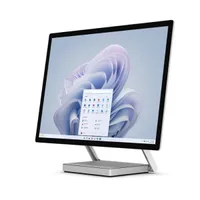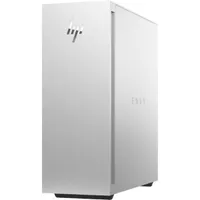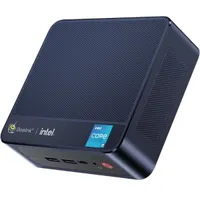Best PCs for music production 2025: Apple Macs and Windows machines for your home studio
Discover the power that a desktop PC or Mac can bring to your music-making, with my expert pick of the best desktops for music production

Laptops may be the hot property right now when it comes to music-making, but for a lot of musicians, engineers, and producers, one of the best PCs for music production is still the right choice. A PC offers a stable centre point for your studio, and is usually upgradeable and has better connectivity than a laptop as standard.
When buying a PC for music production, you'll need to consider the holy trinity of specifications. I'm talking about the CPU, RAM, and storage, all of which are the core of a great music-making machine. These days, you'll want at least an Apple M1/Intel i5 CPU, 16GB RAM (or 8GB unified memory), and an SSD hard drive. If you want to game or do some video work, then a GPU (aka graphics card) will be handy, but you don't need one for the vast majority of music production tasks.
I've been making music for twenty years now, so we've got plenty of experience using desktops for music production at home, as well as in the studio. Having tested so many desktop machines, I've got a great overview of what's best for each use case. If you just want the best overall, then I'd go for the Apple Mac Mini M2, which combines power with a compact size and excellent value for money. If you're not a fan of the Apple ecosystem, then the Dell XPS 8940 offers plenty of horsepower for those who prefer a Windows machine.
If you're buying for the first time or just want to know a little more about your options before you pull the trigger, go check out our how to choose section. I've also curated an FAQs section which features loads of commonly asked questions, alongside a glossary of key terms to help you decode those computing-related terms. To see the best PCs for music production available today, keep scrolling for my top picks.
- Looking to make music gear savings this Black Friday? Shop our handpicked selection of the best Black Friday music deals.
My top picks
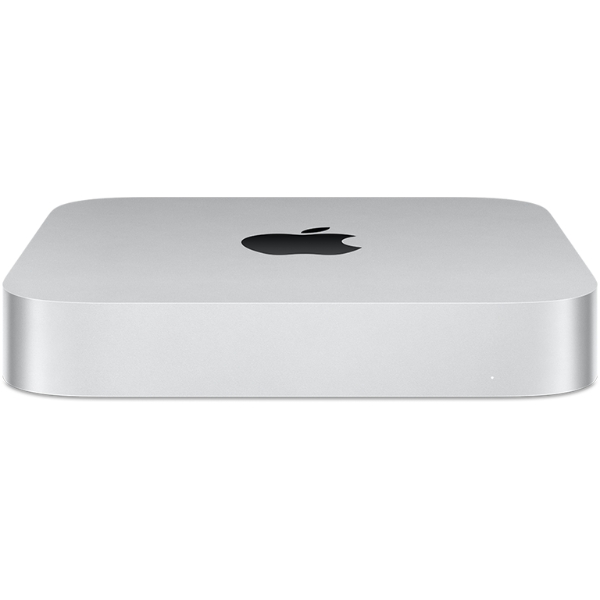
Powerful yet compact, the Apple Mac Mini M2 is our perfect desktop for music production. Its discreet design is great if you don't want a huge tower dominating your space and for a well specced Apple machine, it's relatively inexpensive.
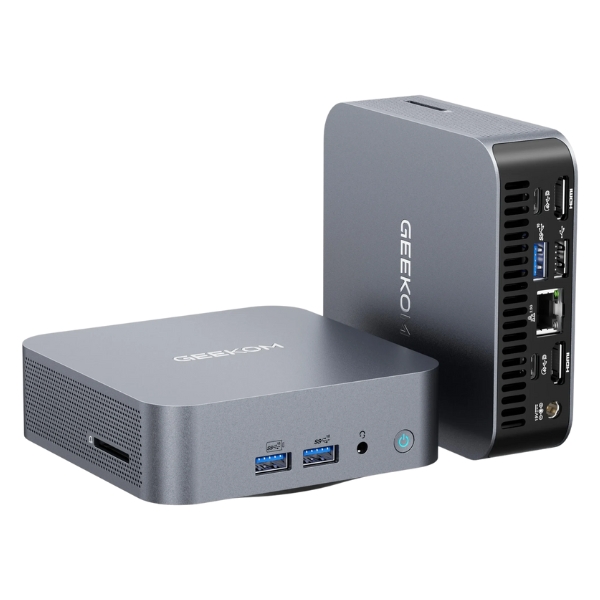
Budget is a relative term when it comes to music production, but if you want bang for your buck the Geekom Mini PC GT13 is our choice. With plenty of CPU power and RAM, it's a great option for well below the $1k mark.
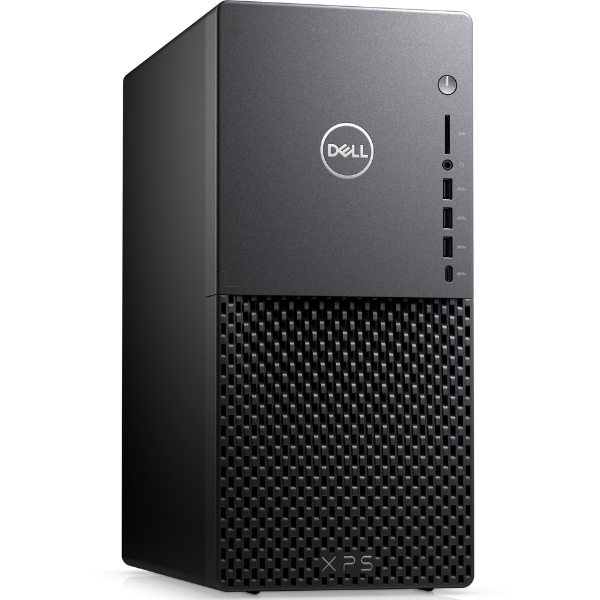
A powerful Windows machine can do just as good a job as an Apple one, and we love the Dell XPS 8940. It doesn't look like much, but underneath that plain black shell is plenty of heft for the vast majority of music-making tasks.

If you want an all-in-one Mac to cover your music-making needs, we'd go for the Apple iMac M1. The screens on them are absolutely stunning, and there's plenty of horsepower for CPU-intensive music tasks thanks to the powerful M1 chip.

It's overkill for home studios, but if you're setting up a proper bespoke studio then the Apple Mac Pro will deliver the utmost in power. It comes with a rackmount option, and you'll be future-proofed for at least the next ten years with this beast.
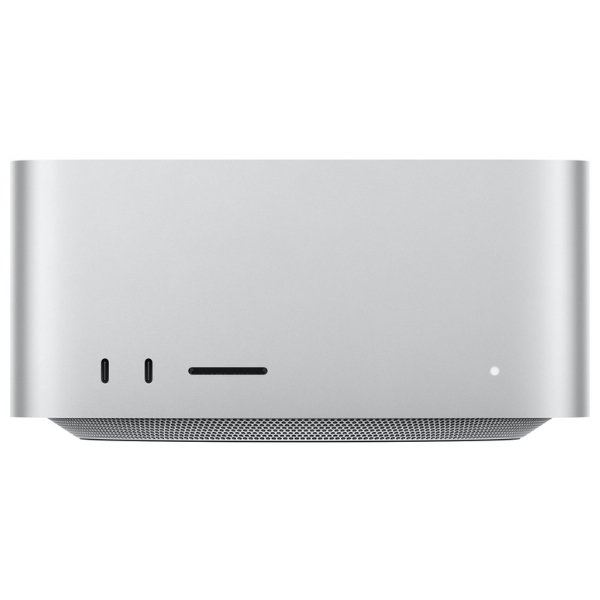
Film scoring is one of the more intense music-making tasks you'll ask of your computer, and the Apple Mac Studio has plenty of capacity for sound editors. If you're making films too, it also doubles as an incredibly powerful video and photo processor.
Best overall
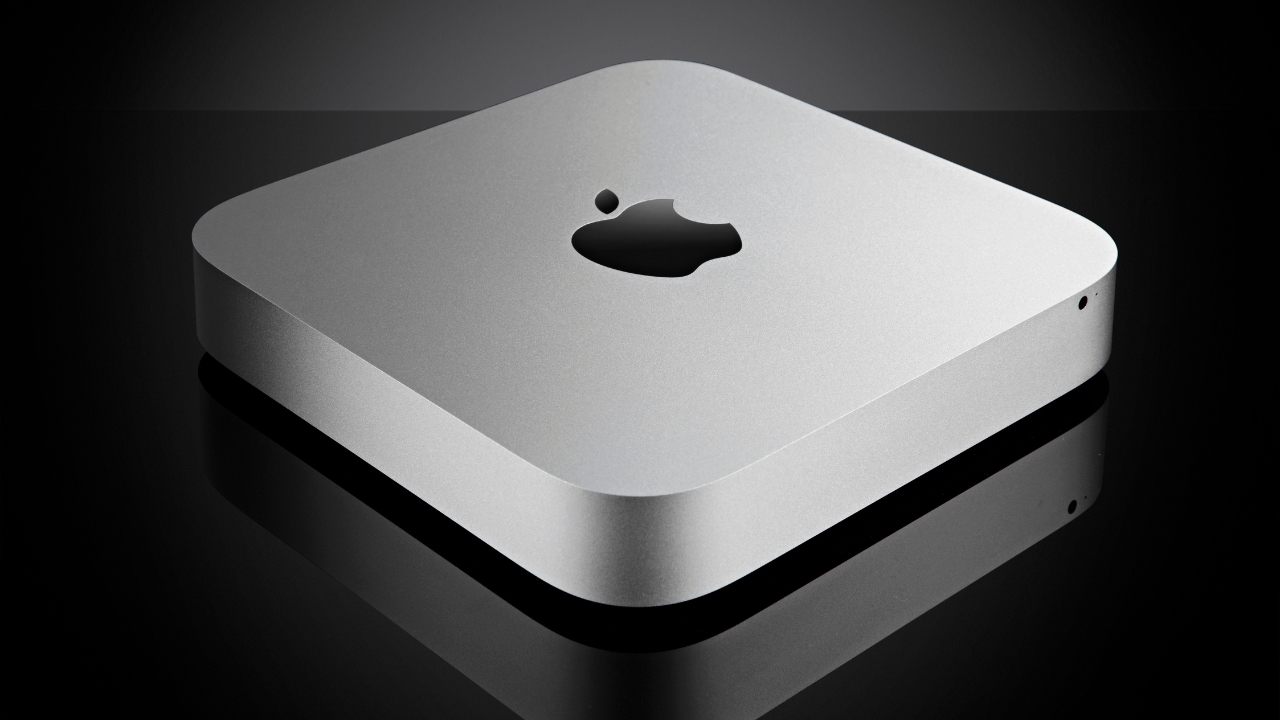
Specifications
Reasons to buy
Reasons to avoid
✅ Buy if you want a small yet powerful machine you can place discretely in your studio: With it's small size but plentiful power, the Mac Mini is our favorite PC for music production, and you'll find them in lots of professional studios.
❌ Avoid if you want to upgrade: As with all Macs once you spec the machine out it's not possible to upgrade, so avoid if you want to add more storage or RAM at a later date.
Overview: If you want a permanent machine for your studio space, I'd go for the Apple Mac Mini. Its small size combined with powerful processing power makes it a studio workhorse, and it's excellent value for money too.
Build: It’s still the same grey square that it’s been for a number of years, but therein lies its beauty. It’s small enough that it can be tucked away from view, but powerful enough that it will satisfy the needs of many producers and musicians, whether working at home or in a professional recording studio.
Usability: It runs ultra-quiet, making it great for home studio users who are recording in the same space they're mixing, and if you upgrade to the Pro version you get plenty of connectivity. If you really do need to take it on the go, it's small and lightweight enough that you can pop it into a backpack.

"This is amazing performance, particularly for the single core, and much like the MacBook Pro, the cooling fan didn’t budge during my tests. What’s more, although I didn’t have them side by side to compare, when reasonably idle I would say the Mac mini fan is noticeably quieter than the Mac Studio, which makes it ideal for music users."
Read more: Apple Mac Mini M2 review
Best budget

2. Geekom Mini PC GT13
Our expert review:
Specifications
Reasons to buy
Reasons to avoid
✅ Buy if you want to spend as little as possible: Coming in just over the $600 mark, this mini PC is a brilliant value for money proposition for cash-strapped producer.
❌ Avoid if you're recording in the same space: The fans on this PC can get pretty loud under heavy loud, which could intrude if you're recording quieter instruments or vocals.
Overview: At around the size of roughly five pieces of bread stacked on top of one another, the Geekom Mini PC GT13 has a near-perfect spec for any budget-conscious producer. It's not the cheapest overall of course, but for music production, you want plenty of CPU power and this has got it.
Build: It's got a 1TB SSD which is plenty of space for a DAW and a myriad of instruments and plugins, and loads super fast. I love having four USB-A slots and two USB-Cs for connectivity. The fan does get a little noisy when it's under intensive tasks, so something to bear in mind if you record in the same room that you mix.
Performance: Equipped with a 13th-gen i7-13620H it's got plenty of oomph for running multiple VSTs with plenty of plugins stacked on their channels. 32GB of DDR4 adds to the speedy feel of using the Geekom Mini, making it a great choice for Windows users who don't want to go down the Mac Mini route.
Best PC
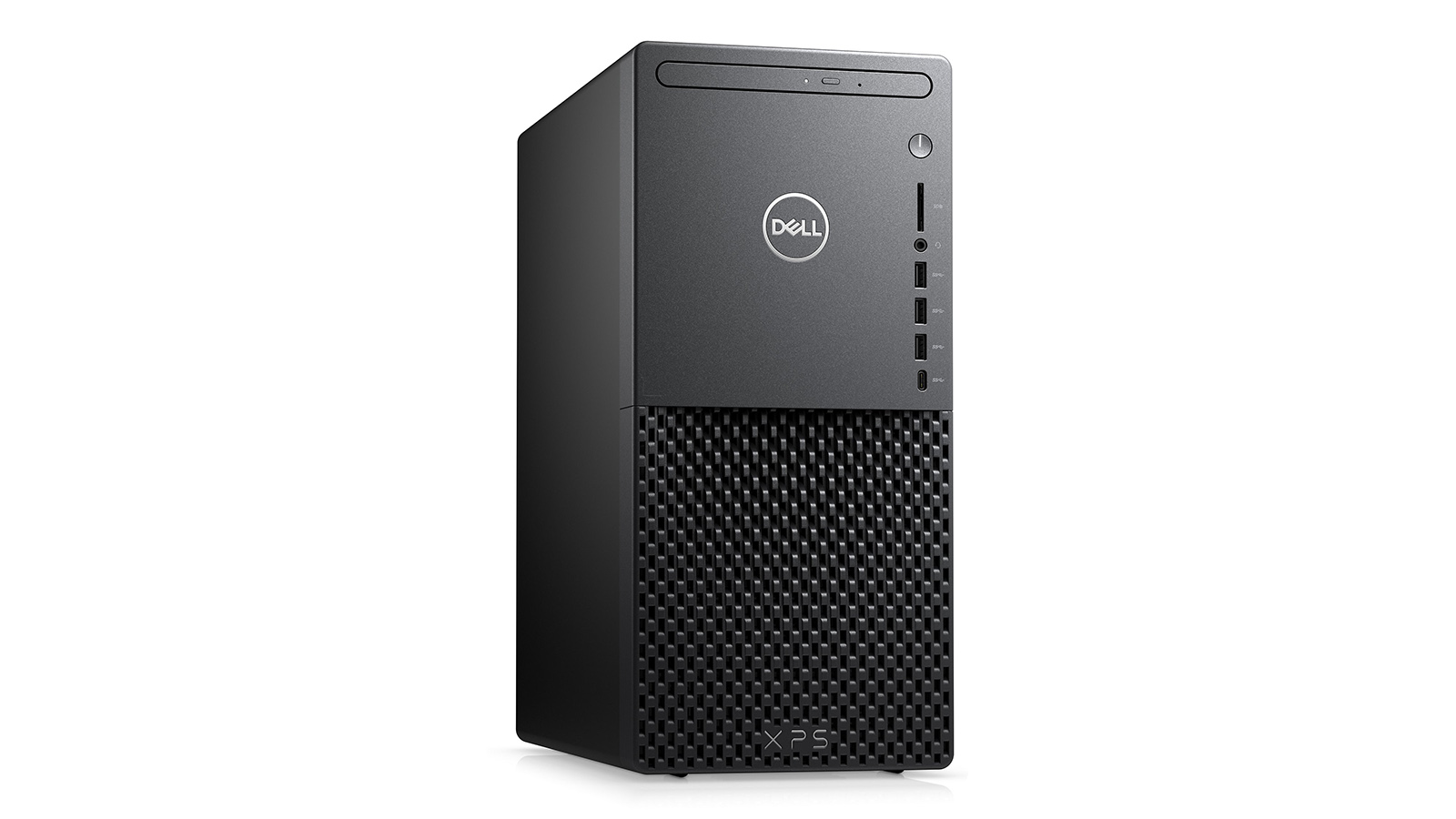
3. Dell XPS 8940
Our expert review:
Specifications
Reasons to buy
Reasons to avoid
✅ Buy if you want the ultimate Windows PC: With plentiful power and a ridiculously powerful spec, the XPS 8940 is the choice for the music production pro who doesn't want to use Mac OS.
❌ Avoid if you're trying to build a 'vibe' in your studio: With it's dull office black chassis you'll want to avoid if you're trying to create an atmosphere for your music creation.
Overview: It used to be that Apple dominated the world of music-making machines but more and more users are returning to Windows machines, thanks to their software flexibility and ability to upgrade. The Dell XPS 8940 is a great option for those who want to go the PC route but don't want a garish-looking gaming PC.
Build: Sitting above its Inspiron tier of everyman desktops, the Dell XPS 8940 might look fairly unassuming but under the hood is a very nicely spec’d desktop PC which will excel at music production. I particularly like the high number of connectivity options, with four USB 3 slots on the front of the machine, meaning there’s less reliance on dongles and hubs than you might normally encounter.
Performance: If you’re looking for a flashy machine you can show off in your YouTube videos, this isn’t it. But if it’s a powerful, trustworthy beast of a desktop PC that will devour renders, plugins, and other processes that you're after, then the Dell XPS 8940 is a very safe bet indeed.
Best all-in-one

Specifications
Reasons to buy
Reasons to avoid
✅ Buy if you want an all-in-one solution: Coming with a screen built in, the iMac M4 is a great option if you want something that combines desktop machine and screen in one handy unit.
❌ Avoid if you're looking for something upgradeable: You won't be able to upgrade this machine once you've spec'd it out at purchase, so avoid if you think you might need extra RAM down the line.
Overview: Apple’s famous all-in-one series has history in the colour stakes, with the old iMac G3 range introducing the idea that computers didn’t have to be black or beige. With the Apple iMac M1 line-up, it’s gone back to that playful attitude, only this time there have been some serious changes under the hood. This is down to the M1 architecture employed by Apple, which is both good and (potentially) not-so-good news for music production.
Build: It's a stunning-looking bit of kit, available in seven different colours so you can match with the look of your studio, or just choose your favorite colour. It can be spec'd with unified memory from 16GB to 32GB, and storage ranges from a 256GB SSD all the way through to a huge 2TB.
Performance: In my tests, the iMac M4 absolutely smashed every stress test I threw at it, easily handling sessions with huge plugin counts. It's more than capable for the vast majority of music production tasks, and it really does excel, delivering an unbelievably smooth performance.
The only thing that lets it down is that its more expensive than a Mac Mini, and far less portable than a MacBook, which means a lot of music-makers might prefer to go for those unless they're really invested in an all-in-one system.

"While the Apple iMac M4 is more than powerful enough for the vast majority of music-making tasks, its form factor means that it sits in between the studio staple Mac Mini and a MacBook Pro or Air. For the majority of producers, the iMac probably isn’t the right choice, but for a specific bracket that work from a home studio and doesn’t need something mobile, it’s a fantastic way to save on space versus a traditional PC, and get an all-in-one workstation that looks and feels incredible."
Read more: Apple iMac M4
Best pro option
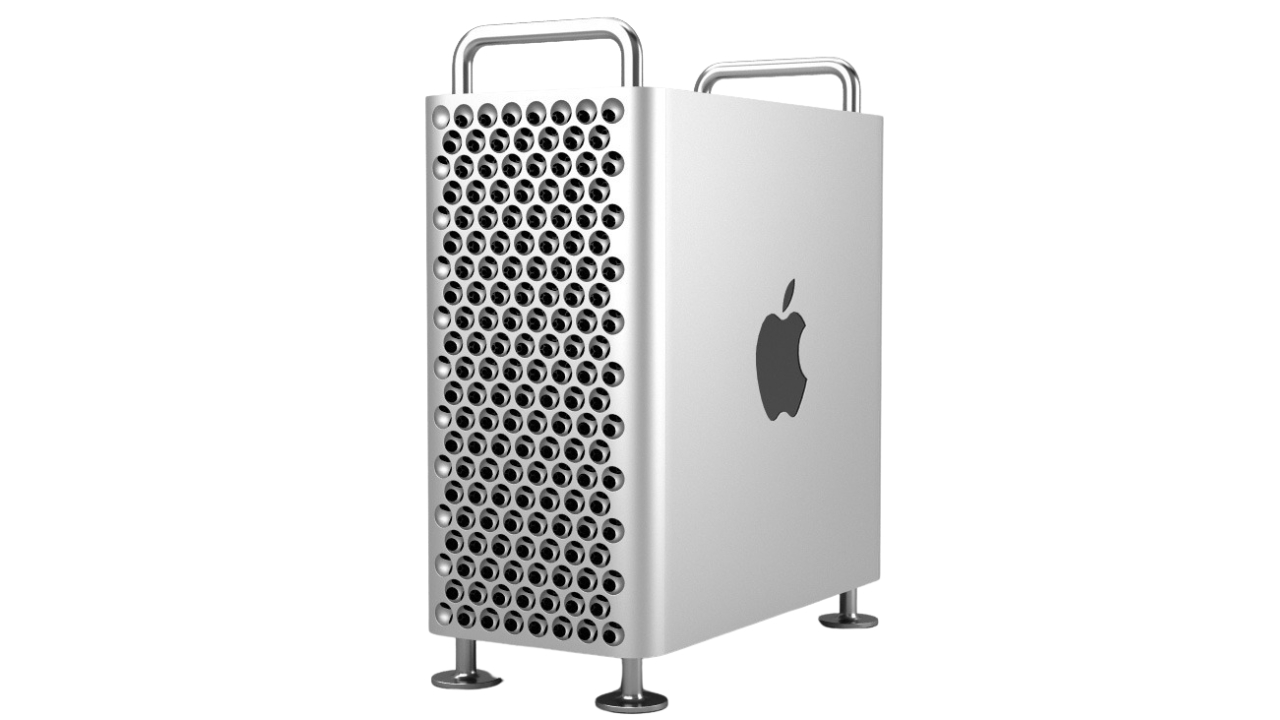
5. Apple Mac Pro
Our expert review:
Specifications
Reasons to buy
Reasons to avoid
✅ Buy if you want the most powerful music production machine: You can seriously spec out this beast of a machine, making it perfect for power hungry professional music-makers.
❌ Avoid if you're on a budget: Do yourself a favour and look away if you're on a tight budget, because this is the most expensive option on this list.
Overview: It seems churlish when talking about the new Apple Mac Pro, this high peak of consumer computing excellence, to refer to it as the ‘cheese grater’. You have to admit there’s a resemblance though.
Build: Put that to one side, however, and marvel at that potential spec sheet. It is, frankly, nuts. Fun game; visit the Apple website and max out the potential specs. We did, and got a final cost of over $64,000. For a computer. What a computer though! You can build this computer to whatever spec you like, which makes it perfect for professional music makers.
Performance: This is a machine strictly for professional-level music makers, packed with enough power to handle any music-making task you can throw at it. Safe to say the new Mac Pro will be more than you would ever need, and that statement will probably still be valid in 10 years’ time, maybe even longer with how powerful the latest M-series chips are.
Best for film

6. Apple Mac Studio
Our expert review:
Specifications
Reasons to buy
Reasons to avoid
✅ Buy if you want to score for film: If you're scoring for film you'll need something very powerful for huge banks of instruments, as well as potentially having the ability to render moving imagery yourself.
❌ Avoid if you might need a future upgrade: Again, it's an Apple machine so once you've configured it you're stuck with it. One to avoid if you think you might need to expand your processing power in the near future.
Overview: In my opinion the Apple Mac Studio is the perfect option for the serious (and the semi-serious) music producer, and let's face it, a well-specced Apple machine has always been a solid option. While it hasn’t formally killed the veteran Mac Pro, Apple's smaller, more studio-focused machine is ideal for audio, video, design and other creative pursuits.
Build: The Apple Mac Studio is small, for a desktop, and can be configured to some pretty mind-blowing numbers - does anybody yet need 192GB of RAM? If your scoring for film then it would be our number one choice as it will easily handle a huge amount of tracks with virtual instruments, as well as being a fantastic video-processor in its own right if you want to up your YouTube or social media game.
Performance: It’s worth pointing out that the upgrades and enhancements can only be ordered upfront - everything is soldered down the minute it leaves the factory line so choose your spec wisely - but there’s enough power here to satisfy even the most process-hungry producer for a good while yet.

"In the Alchemy test Logic Pro consistently played 85 tracks. I found the buffer size sweet spot was 128 samples, with the higher settings (512 and 1024) the least efficient. Rather surprisingly the fans did not budge at all during these stress tests, and the casing stayed cool to touch. I also ran Geekbench for my review device, and the scores (1784 single core, 12539 multi core) place it easily amongst the current Mac Pro configurations."
Read more: Apple Mac Studio review
Also consider
For us, the above machines should cover pretty much any music maker's needs. That said, we appreciate one glove does not fit everyone, so here are a selection of alternative music-making machines for your consideration.
Microsoft Surface Studio 2
Intel i7 | 32 GB RAM | 2TB SSD
As if to prove it isn’t Apple that has the monopoly over elegant computers that cost the same as some cars, Microsoft offers up the Surface Studio 2. Now in its second iteration, this is some machine. Centre stage is the 28” PixelSense display, which can be titled downwards so it becomes like an enormous, hugely powerful tablet. We can see the benefits for DAW users of having effectively their entire session laid out in front of them, ready to be tweaked intuitively by hand, rather than mouse and keyboard. It’s all rather futuristic, we think.
★★★★½
HP Envy TE02
Up to Intel i9 | Up to 64GB RAM | Up to 1TB SSD
The HP Envy TE02 would make an ideal first home studio PC and is configurable up towards some pretty impressive specifications. While the base unit would be perfectly capable for a lot, we’d advise pushing the boat out and upping the RAM towards 32GB and, if you can, consider employing the hybrid storage for a nice combination of size and speed.
★★★★☆
Beelink SEi11 Pro Mini PC
Intel i5 | up to 64GB RAM | 500 GB SSD
Intel's NUC (Next Unit of Computing) spec has resulted in smaller PCs but that doesn't mean less power as this Beelink SEi11 Pro Mini PC proves. It can do all the tasks that a regular desktop machine can handle as it offers the full four-core and eight-thread power of a Core i5 processor. With plenty of memory and an NVMe main drive, the result is a highly responsive machine that runs like something much larger, so will handle many music tasks.
★★★★☆
How to choose
Desktop PCs are a great choice for music production because they can offer, pound for pound, more performance than laptops. What they lack in portability they more than make up for in sheer performance and future-proofing. More on that later. In general, the three most important specs you should be looking out for when choosing a music production PC are the processor, RAM, and storage.
Elsewhere, you’ve got a bit of freedom to choose. You might favour something with flashy RGB lighting, or you might look for something with a small footprint. What is important, however, is to look at the machine’s long-term potential. While a flashy all-in-one machine might look incredible on paper, it might not be easy to upgrade in the future which means you might find yourself back at the drawing board in a few years. The smart money is always on buying a machine that can grow with you, or buying powerful enough that your future proof yourself.
1. CPU
MusicRadar's got your back
The processor (or CPU) is the brain of the computer and, for non-Apple buyers, you should be looking out for at least an Intel i5 or AMD Ryzen 5. A slower processor will make everything take longer, such as freezing tracks, rendering mixes, and using complex plugins. Cheap out with the processor and you can expect to spend many an hour staring at a progress bar.
2. RAM
RAM is important for music production, particularly if you’re employing sample-based virtual instruments. As an absolute minimum look for 8GB, but ideally, you want 16GB or upwards. Thankfully, this is one of the simplest parts of a PC to upgrade yourself, so if you find your sessions are spluttering down the line you can quickly add some extra RAM and see an instant boost in performance.
3. Storage
Storage is the other key ingredient. For audio work, we’d recommend at the very least a SSD as your main drive which you'll run your DAW off. SSDs are getting cheaper by the day, and their lack of moving parts make them brilliant partners for safe storage of all your music making exploits, plugin installers, sample packs, etc. An SSD will also massively speed up your workflow, enabling rapid fire loading of all your music-related tools.
Most modern PCs ship with an SSD as standard, but if you don't have budget for an additional or larger SSD, a regular HDD will work just fine, albeit at a significantly slower pace. We'd also recommend getting a backup drive sooner rather than later. The last thing you want is for years of creativity getting lost to wayward placement of an external SSD or an old HDD going bad.
FAQs
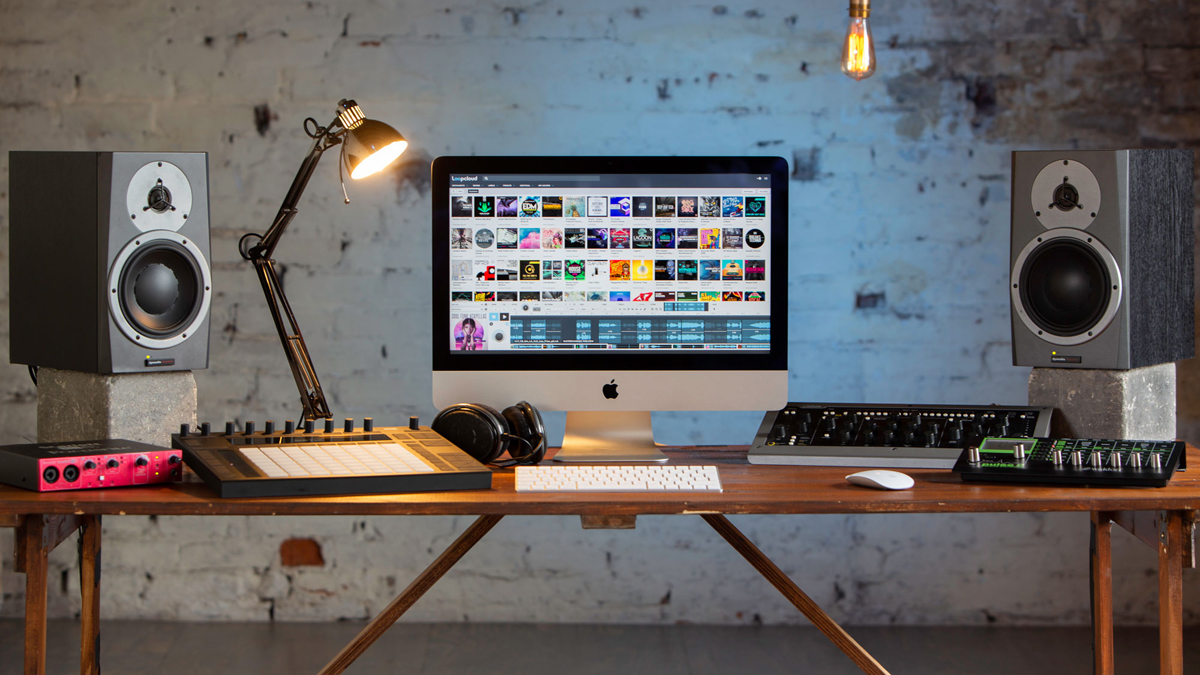
What computer is best for making music?
These days the affordability of processing power is such that you can get great value machines that will more than easily handle most home recording tasks. In fact, nowadays the vast majority of laptops can handle these tasks, particularly when it comes to silicon chip Macs. At the end of the day, the best computer for making music is the one that you can afford, so do your research, spec out your ideal machine, and get to making music.
Is cooling important with a music production PC?
Also of importance regarding CPUs is the issue of cooling. Desktop PCs are typically larger in size than laptops, and therefore have superior options for cooling. Processors give off plenty of heat, after all. A choice you may have to make is between fan or water cooling. Both have advantages and disadvantages; however, the reduced noise from water cooling gives it an edge in environments where volume levels are a factor, e.g. recording booths.
Do I need an audio interface?
You may have noticed we haven’t mentioned audio capability in a desktop computer – pretty fundamental, you’d think? The simple reason is that music and audio production requirements – i.e. plugging in recording microphones or guitar cables – are better handled by external audio interfaces, a vital purchase if your serious about your music making.
Is i5 or i7 better for music production?
While both of these processors should be able to handle music production tasks, it's not just that you'll need to look at. Virtual instruments and plugins can be particularly RAM intensive, so you'll need to make sure you have at least 16GB on a traditional Windows PC or 8 GB of the unified memory on a Mac or MacBook. This in combination with an i5 or i7 should be plenty of power for making music.
Is 16GB memory enough for music production?
More RAM is always better in our opinion, but if 16GB is the max your budget can stretch to, you will still be able to handle the vast majority of home recording tasks. Apple's unified memory appears to perform better, and we've used machines equipped with 8GB of this without any issues for basic home recording.
Key terms
- ASIO (Audio Stream Input/Output): A low-latency driver protocol for Windows computers.
- Benchmarking: Testing a production PC via software or by performing tasks. I use the D-Verb test to stress test laptops for music production, but you can do the same test on a desktop computer.
- Bus-powered: Refers to devices that draw power from a USB port. MIDI controllers and keyboards as well as audio interfaces are often bus-powered
- Chipset: The heart of the motherboard in a computer, the chipset manages the data flow between the CPU, RAM, and other components.
- CPU (Central Processing Unit): The brain of your PC which controls all the applications and calculations required to run them.
- DAW (Digital Audio Workstation): The software used to record, edit, and produce music.
- GPU (Graphics Processing Unit): More commonly known as a ‘graphics card’, this component controls the video aspects of a PC.
- HDD (Hard Disk Drive): An older form of storage for computers that uses magnets to retrieve data from a spinning disk. More prone to failure than an SSD.
- Latency: This is the delay in your PC processing audio going in and playing it back out of the speakers. Getting this as low as possible is key to good performance.
- MIDI (Musical Instrument Digital Interface): A method of communication that allows musical devices to send signals to digital software.
- OS (Operating System): The type of software that your computer uses to run all its programs. The major ones are Apple or Microsoft, but there are others like Linux and Ubuntu.
- Plugin: A software instrument or effect that you use in your DAW.
- RAM (Random Access Memory): Temporary storage that your PC uses for performance. It’s key to have a lot of this for music production purposes.
- Sample library: A collection of recorded sounds used by instruments or as audio in music production.
- SSD (Solid State Drive): A newer, faster type of storage that uses integrated circuits to store data. Much faster and more reliable than an HDD.
- Thunderbolt: A modern type of connection port that enables faster data transfer. Newer Thunderbolt ports are interchangeable with USB-C ports.
- Throttling: This is what happens when you push your PC too hard and the performance stutters due to excess heat. Results in a slowdown in performance.
- USB (Universal Serial Bus): A port used to connect lots of different devices to a computer. Comes in various formats, each with a different type of connector.
- VST (Virtual Studio Technology): A plugin type that allows virtual instruments to run inside software, created by Steinberg.
Why trust us?
✔️ 3 million visitors per month
✔️More than 9,500 reviews on-site
✔️17 years of product testing
Since 2007 MusicRadar has been helping musicians of all kinds, whether they're guitarists, drummers, producers, keyboard players, or DJs. We've been testing music gear for a long time, and our team of highly experienced industry professionals collectively have over a century's worth of knowledge from real-world music-making.
MusicRadar has been the go-to place for musicians looking for the latest news, best gear reviews, and how-tos for 17 years and counting, irrespective of your particular instrument, or favourite music genre.
As well as providing the best online music content, MusicRadar also hosts content from stalwart magazine brands including Future Music, Computer Music, and eMusician. We receive three million visitors per month, making us the preeminent destination for music makers and lovers worldwide.
Meet the experts

Matt has been recording bands since the mid-noughties, cutting his teeth with an M-Audio M-Track 2 and a copy of Cubase on a Windows XP PC. Since then he's used countless computers to record music for bands across the UK, covering everything from djent to jazz. As a MusicRadar writer, Matt has reviewed 5 laptops and computers in the past year alone, and over 50 different products including guitars, amps, and pedals. Before becoming a writer, he spent five years in the music retail industry working for Dawsons Music and Northwest Guitars, providing expert advice to musicians. He’s currently studying Studio Production and Mastering at Spirit Studios in Manchester, UK.

Andy has been writing about music production and technology for 30 years having started out on Music Technology magazine back in 1992. He has edited the magazines Future Music, Keyboard Review, MusicTech and Computer Music, which he helped launch back in 1998. He owns way too many synthesizers.

Chris Corfield is a journalist with over 12 years of experience writing for some of the music world's biggest brands including Orange Amplification, MusicRadar, Guitar World, Total Guitar and Dawsons Music. Chris loves getting nerdy about everything from guitar and bass gear, to synths, microphones, DJ gear and music production hardware.

Jon is a London based platinum award winning mixer, producer, composer and club remixer with a diverse CV that spans dance, pop, rock and music for media. He’s also a long term contributor to MusicRadar's music technology tutorials and reviews. Whether working alone or collaborating he usually handles final mixdowns, so you’ll also find MusicRadar peppered with his handy mixing tips.
How we test

Music production PCs require a certain degree of performance if they’re being used for music production. You can look on a spec-sheet, or a build list, if you want a theoretical metric for how a machine will perform but in the real world, it’s only when a PC is put under duress that you will see how it will cope with your musical projects.
We carry out a variety of tests when we’re evaluating the best PCs for music production, including standard trials to see speed and performance capabilities when you’re recording, mixing, tweaking and generally navigating your way around a large DAW session. We’ll check the connectivity options, to see if users with large sample libraries on external storage will be happy. And we check the overall snappiness of the PCs actions, from its initial boot-up time through to how quickly and easily it copes with changing external hardware like audio interfaces.
A good machine should be able to breeze through these checks, or it won’t make the list. Finally, we try to get an understanding of the PC’s potential longevity; can it be upgraded with new components and, if so, is that process simple enough? Then, and only then, do we consider a PC suitable for our list.
Find out more about how we test music gear and services at MusicRadar.
Latest updates
04/11/25: The recently reviewed Apple iMac M4 was added to the guide, alongside a general spruce-up of the product entries. A glossary of key terms has been added to help reader understanding of technical terms, and a new 'why trust us' section has been added along with more author information.
16/01/25: The guide was updated to add more useful content, with 'at a glance' boxes provided for each product entry. The 'also consider' section has been rejigged and various improvements have been made to the page navigation. We've added a 'how to choose' section and answered a broader range of questions in the FAQ.
Related buyer's guides
- Our pick of the best Macs for music production
- Our guide to the best budget PCs for music production
- Store your sessions: best external hard drives for music production
- Go mobile with our pick of the best laptops for music production
- The best computer monitors for music production: DAW-friendly displays
- Organise your recording space with the best studio desks
- The best studio chairs: are you sitting comfortably?
Want all the hottest music and gear news, reviews, deals, features and more, direct to your inbox? Sign up here.

Matt is a Junior Deals Writer here at MusicRadar. He regularly tests and reviews music gear with a focus on audio interfaces, studio headphones, studio monitors, and pretty much anything else recording-related. Matt worked in music retail for 5 years at Dawsons Music and Northwest Guitars and has written for various music sites including Guitar World, Guitar Player, Guitar.com, Ultimate Guitar, and Thomann’s t.blog. A regularly gigging guitarist with over 20 years of experience playing live and producing bands, he's also an alumnus of Spirit Studios, where he studied studio engineering and music production.
